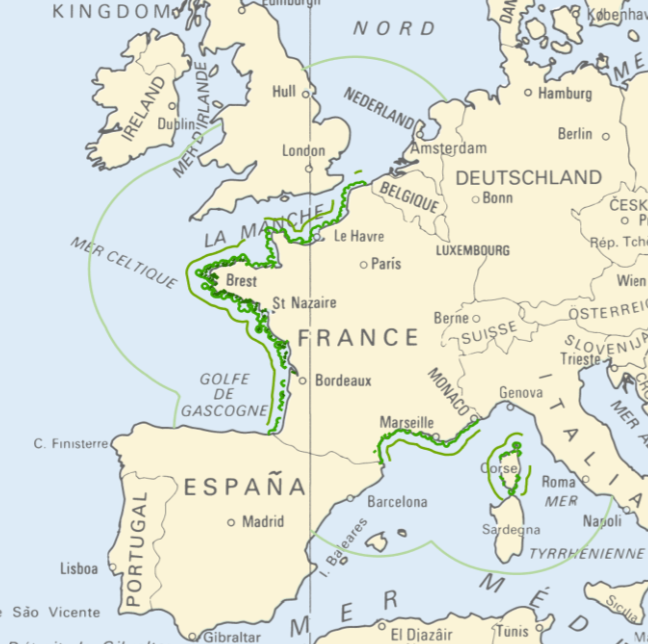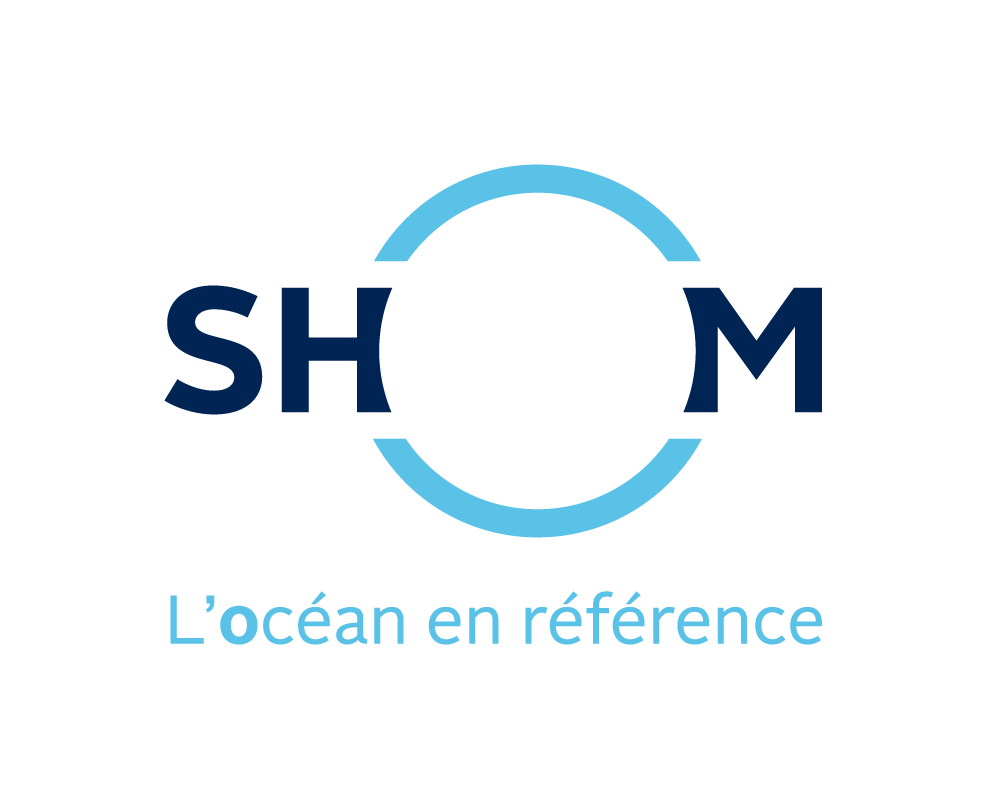regulation
Type of resources
Available actions
Topics
Keywords
Provided by
Representation types
Update frequencies
Scale
-
In compliance with Article 3 of UNCLOS, the outer limit of the territorial sea is located at 12 nautical miles from the baselines. It corresponds to the inner limit of the contiguous and exclusive economic zones. The objects of the theme "Outer limit of the territorial sea" result from Shom computations and are published by decree of the French Republic. Some of those limits are note published by decree yet.
-
Limits defining ship classes based on their assigned operating maritime zones. These limits were produced by CEREMA in application of section II.14 of article 1 of decree no. 200945 amended on 30 August 1984. Navigation categories are defined in article 223.2 of the rules appended to the order of 23 November 1987 on shipping safety.
-
The theme "Agreed maritime boundaries" contains the delineation limits between maritime spaces under sovereignty or jurisdiction of France et neighbouring States which are established by ratification of a boundary agreement or by a decision of an arbitral tribunal or an international legal body entitled to deal with cases relating to the Law of the Sea.
-

<strong>This data is not up to date with the order dated 30 August 2021 amending the order dated 23 November 1987 on ship safety, which now raises the limit for category 4 ships to 5 miles from the nearest coast.</strong> The navigation category allocated to a ship is indicated on its shipping license, together with any applicable restrictions. This limit was produced by Shom in application of section II.14 of article 1 of decree no. 84-810 amended on 30 August 1984. Navigation categories are defined in article 110.10 of the rules appended to the order of 23 November 1987 on shipping safety.
-
In the Law of the Sea, a straight baseline is composed by a loxodrome connecting two points of the low-water line or low-tide elevations if there is a lighthouse or similar permanent infrastructure on them. The conditions to draw such lines are defined in Article 7 of UNCLOS. The straight baselines are part of the baselines of a coastal State below which the internal waters are defined. Those straight baselines, in addition with the normal baseline, compose the inner limit of the territorial sea and are the basis of the computations of the outer limits of other maritime spaces defined by UNCLOS. They are also composed of the closure line for bays and rivers in compliance with Aricles 9 and 10 of UNCLOS. The objects of the theme "Straight baselines" result from Shom computations and are published by decree of the French Republic.
-
French Ministry of Culture / DRASSM - Shom The product "Limit of preventive archeology licence fee" contains the limits for the preventive archeology licence fee (1 nautical mile) as defined in the French Heritage Code. This limit is managed by the Department of Underwater Archeological Research (DRASSM) of the Ministry of Culture. This limit, defined by the Heritage Code at 1 nautical mile from the low-water line, permits to delineate the areas where the licence fee for preventive archeology at sea is applied. The product "Limit of preventive archeology licence fee" is to use in addition to the digital product “Maritime Limits and Boundaries” of Shom (French: “Délimitations maritimes”) which represents the limits of the French maritime spaces of sovereignty or jurisdiction through the World. The product “Maritime Limits and Boundaries” (French: “Délimitations maritimes”) can be viewed and downloaded on the French national portal of maritime limits (https://maritimelimits.gouv.fr).
-
In compliance with Article 33 of UNCLOS, the outer limit of the contiguous zone is located at 24 nautical miles from the baselines. The objects of the theme "Outer limit of the contiguous zone" result from Shom computations and are compliant with Article 10 of the French Order No 2016-1687 of 8 December 2016.
-
The Regulation (EU) No 1380/2013 of European Parliament and Council of 11 December 2013, in its second paragraph of Article 5, authorises Member States to establish coastal waters along its coasts. Those areas enable member States to restrain fisheries to specific species to specific Member States following precise rules (quotas, limited fishery season). The description of the French coastal waters is established in Part 6 of Appendix 1. The coastal waters extend from 6 nautical miles from in force baselines to 12 nautical miles from in force baselines. Only portions of the French coasts are concerned.
-
Geographic information layer including the Saline limit of waters - mainland France, French Guiana, Martinique and Guadeloupe. This layer must be considered as an initial version to be validated locally by the competent services. Shom actively seeks out any information which could complete and improve the precision of this layer. The streams and rivers listed correspond to those mentioned in the applicable regulations and/or by a competent Government service. An inventory of existing legal and geographic information was drawn up prior to production in the form of an enquiry targeting services during the second half of 2014. The source legal text and a summary of digital conversion processes is available for each boundary proposed.Updated july 2018
-
The regulatory part of Volume IX of rural and sea fisheries laws is defined by the decree No 2014-1608 of 26 December 2014. In particular, Article D922-16 of the appendix to the decree defines a limit related to fisheries located at 3 nautical miles from the low waterline of the continent and islands and islets which are always dry. In the particular case of Mayotte Island, in compliance with Article 61 of the prefectural decree No 2018-681 of 30 July 2018 which regulates the exercise of sea fisheries at Mayotte department, this limits is located at 3 nautical miles from the in force baselines.
 Catalogue Shom
Catalogue Shom